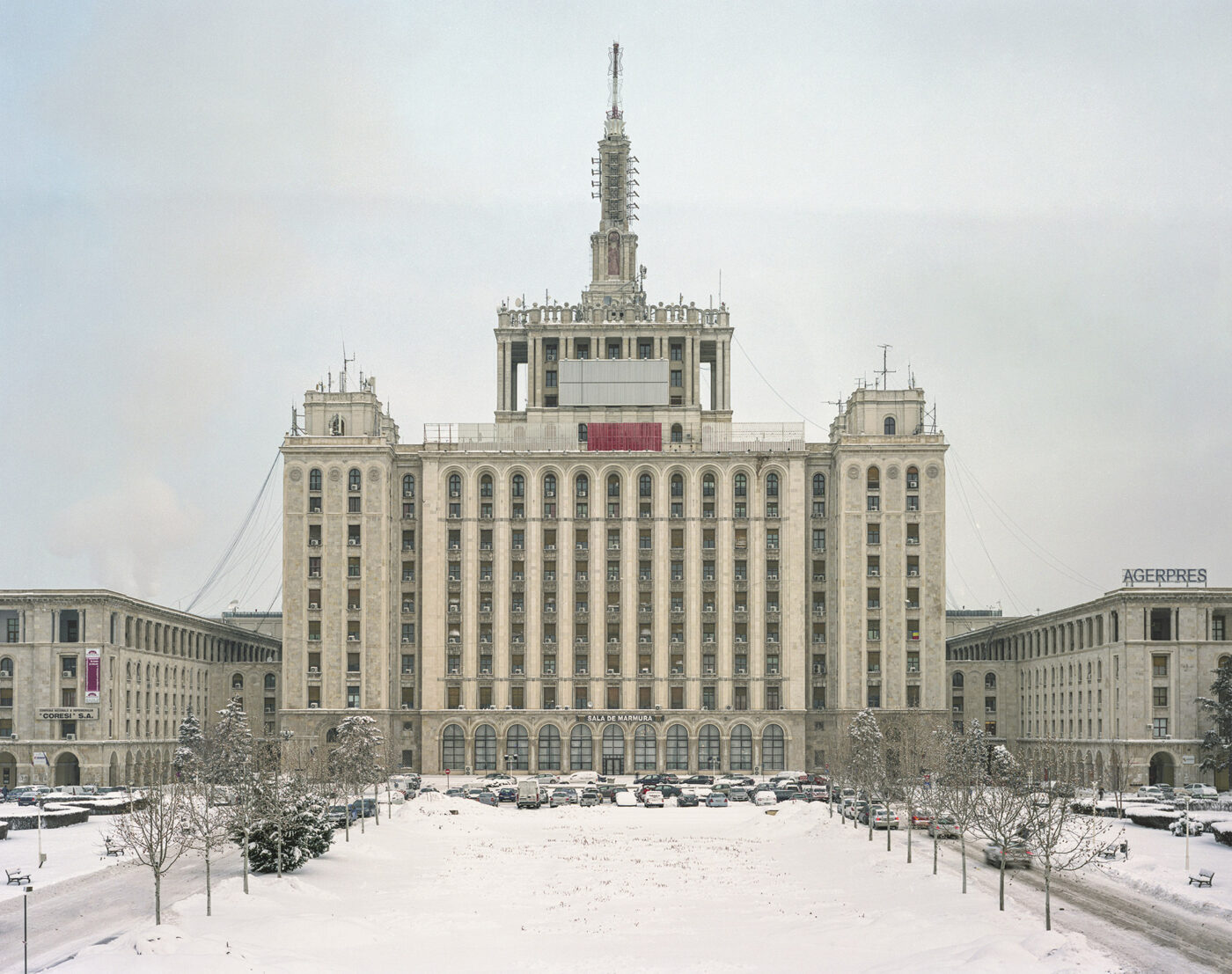
Dani Gherca, Casa Scanteii, 2015. photography, inkjet print, 115x140cm
1/8
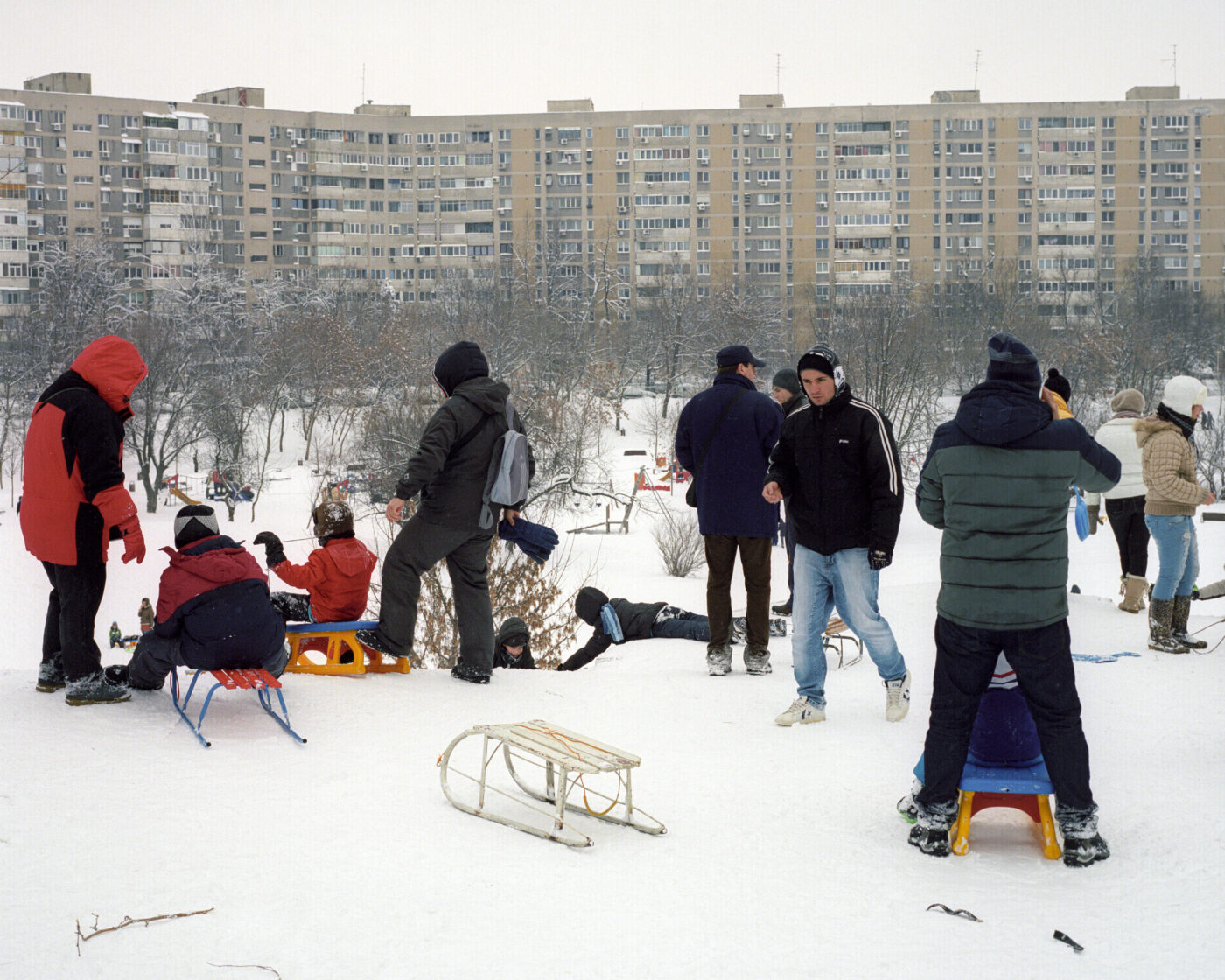
Dani Gherca, People in the snow, 2014. photography, inkjet print, 115x140cm
2/8
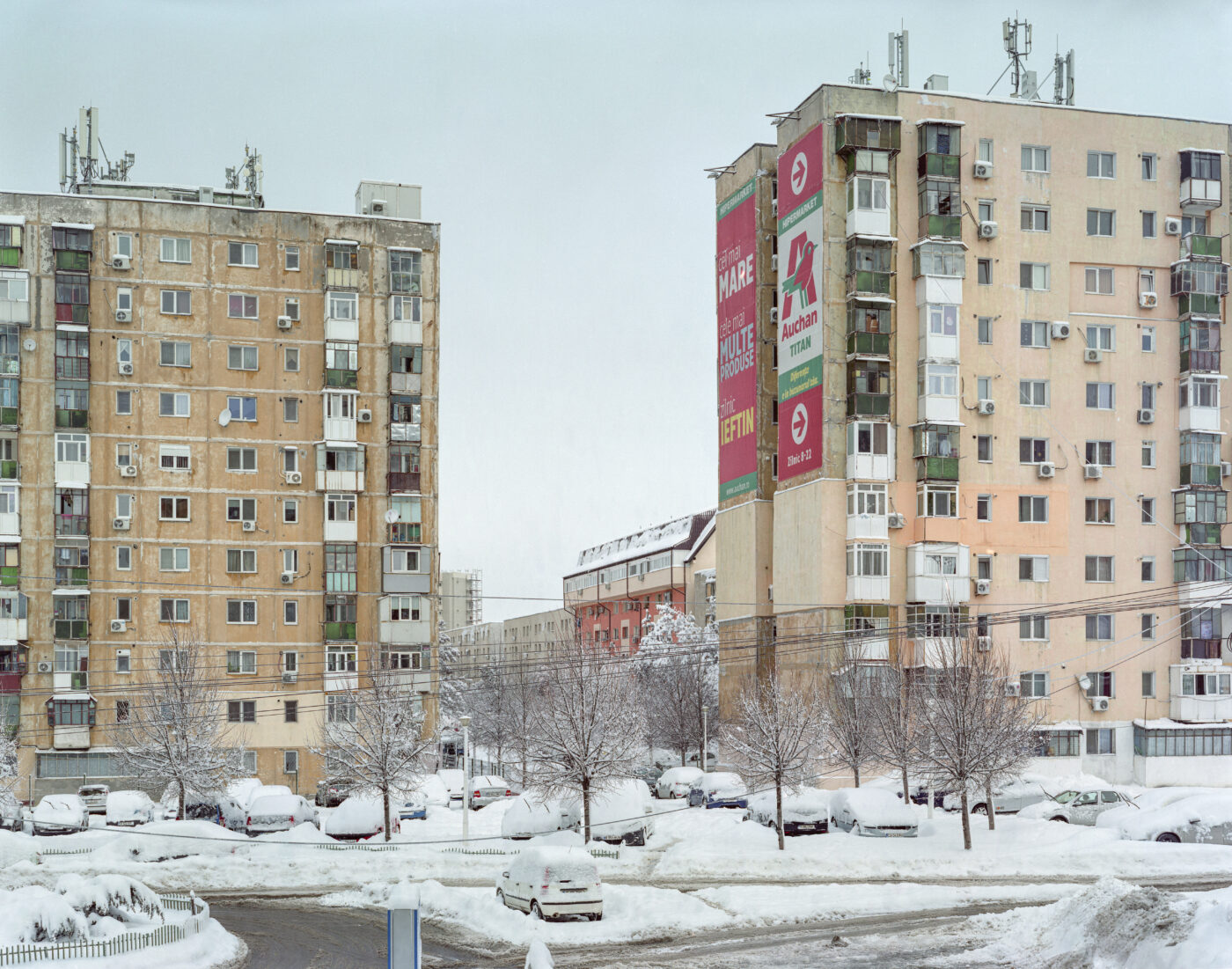
Dani Gherca, Auchan, 2017. photography, inkjet print, 115x140cm
3/8
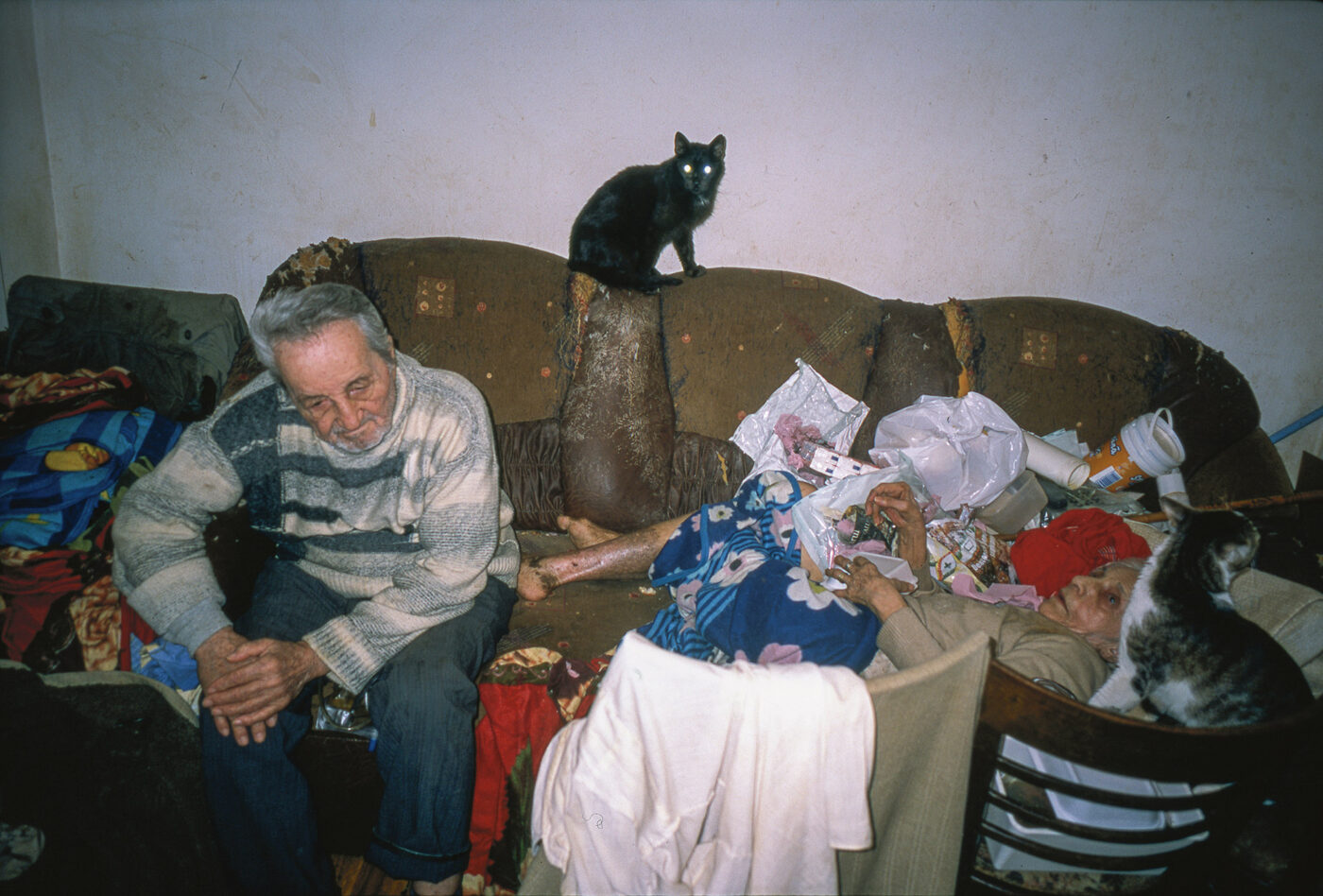
Dani Gherca, Enachescu family, 2015. photography, inkjet print, 100x150cm
4/8
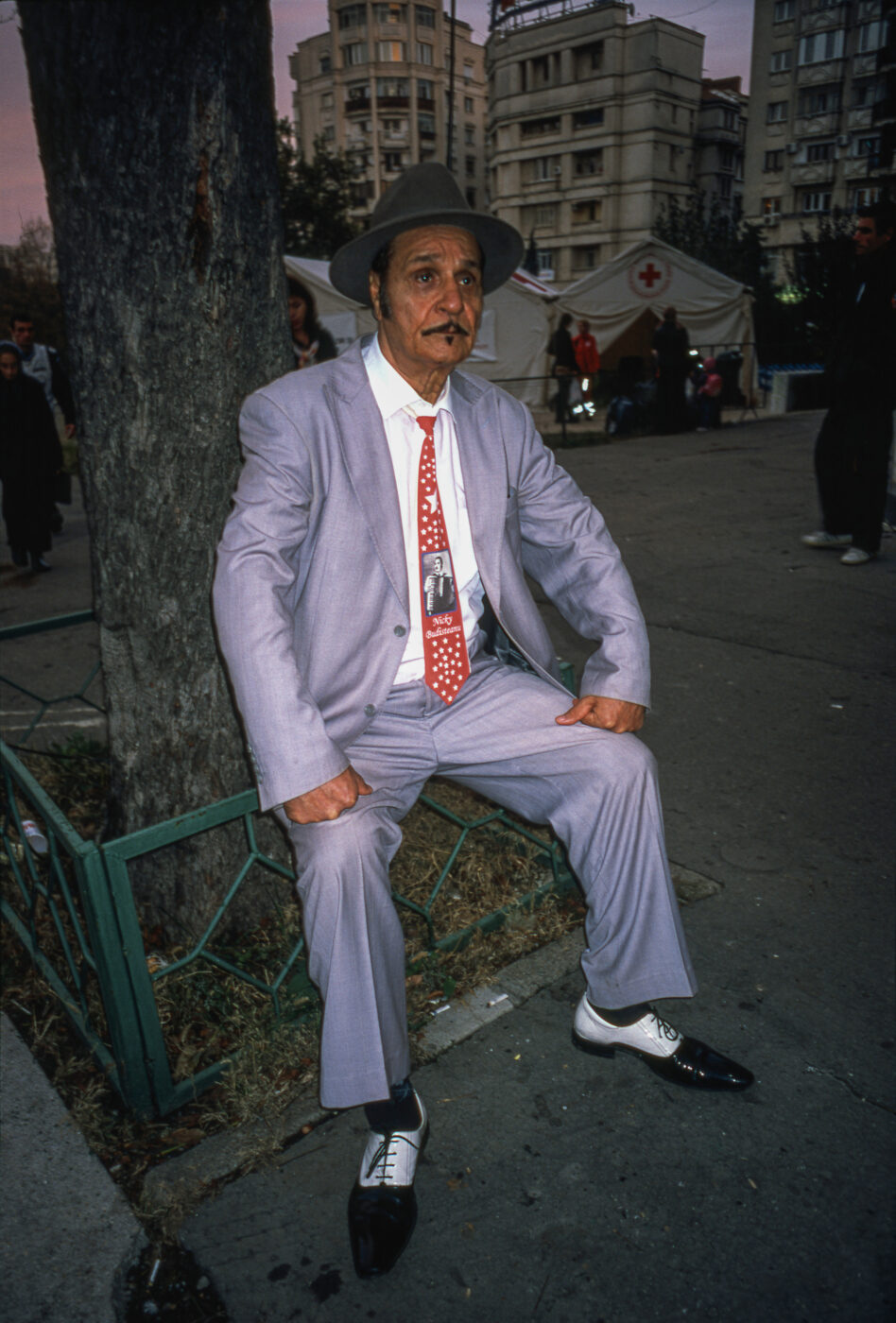
Dani Gherca, Nicky Budisteanu, 2015. photography, inkjet print, 150x100cm
5/8
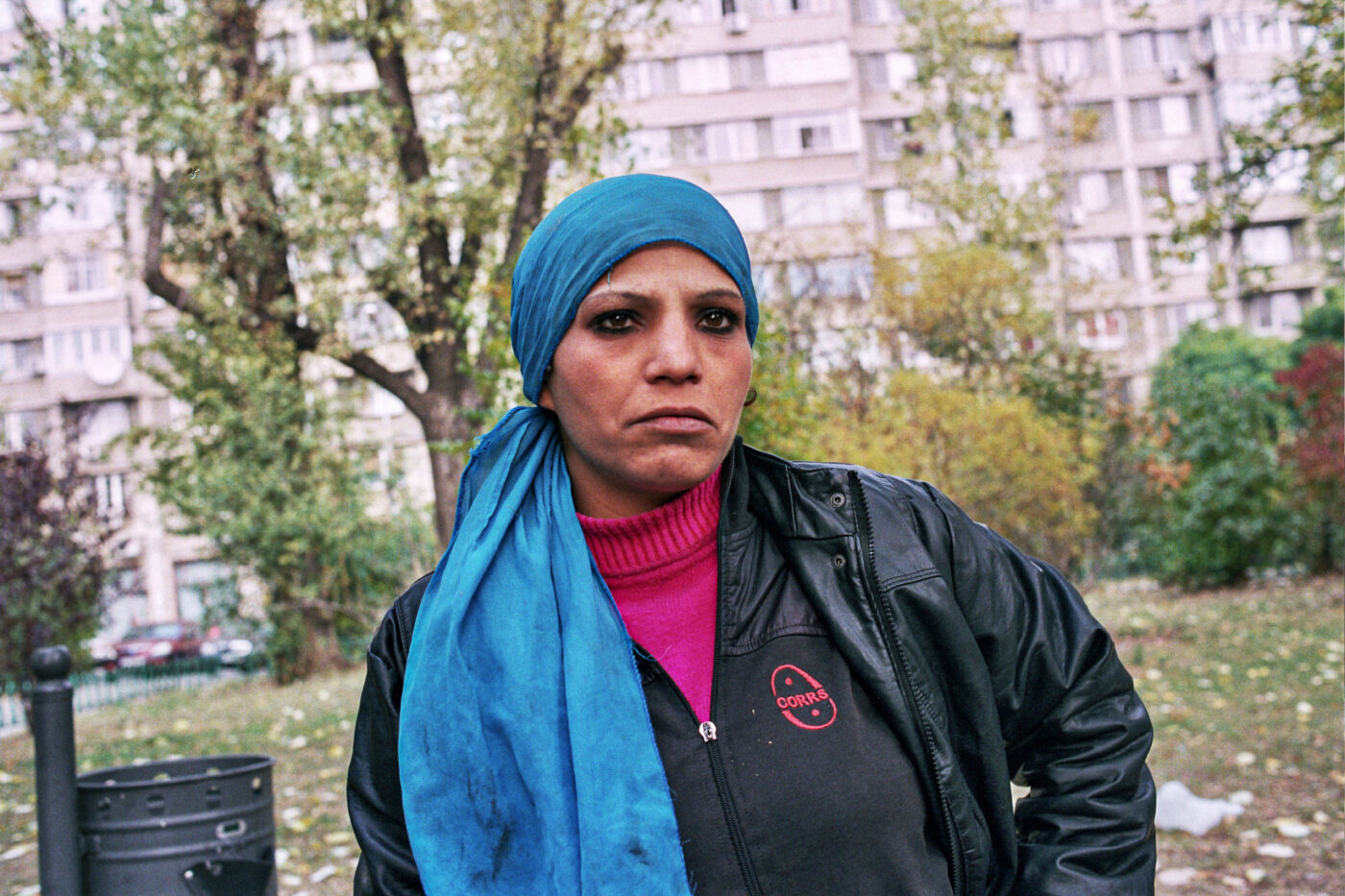
Dani Gherca, Maria, 2011. photography, inkjet print, 100x150cm
6/8
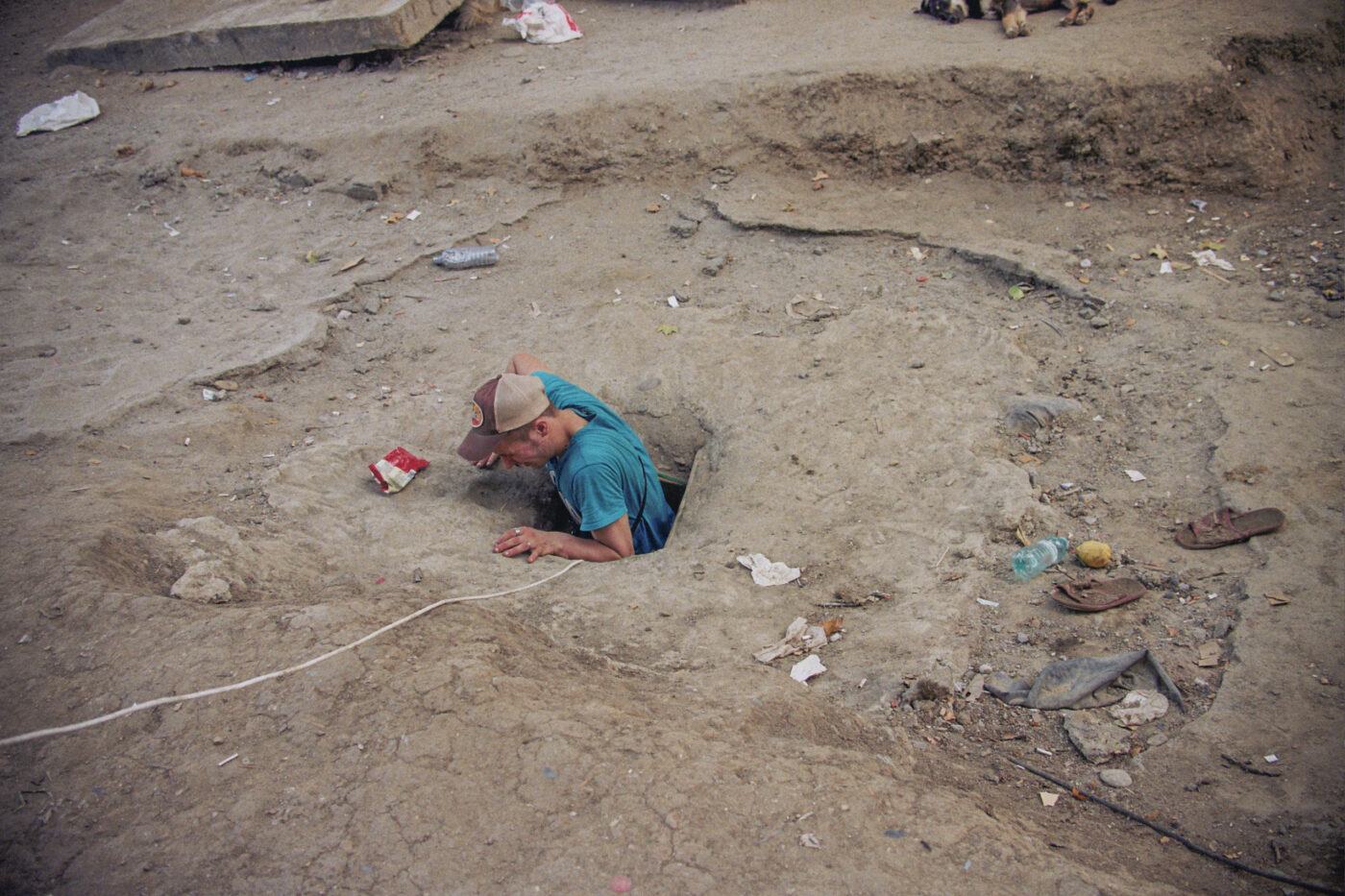
Dani Gherca, Ilie enters the sewer, 2014. Inkjet print on photo Rag Baryta, 230x155cm
7/8
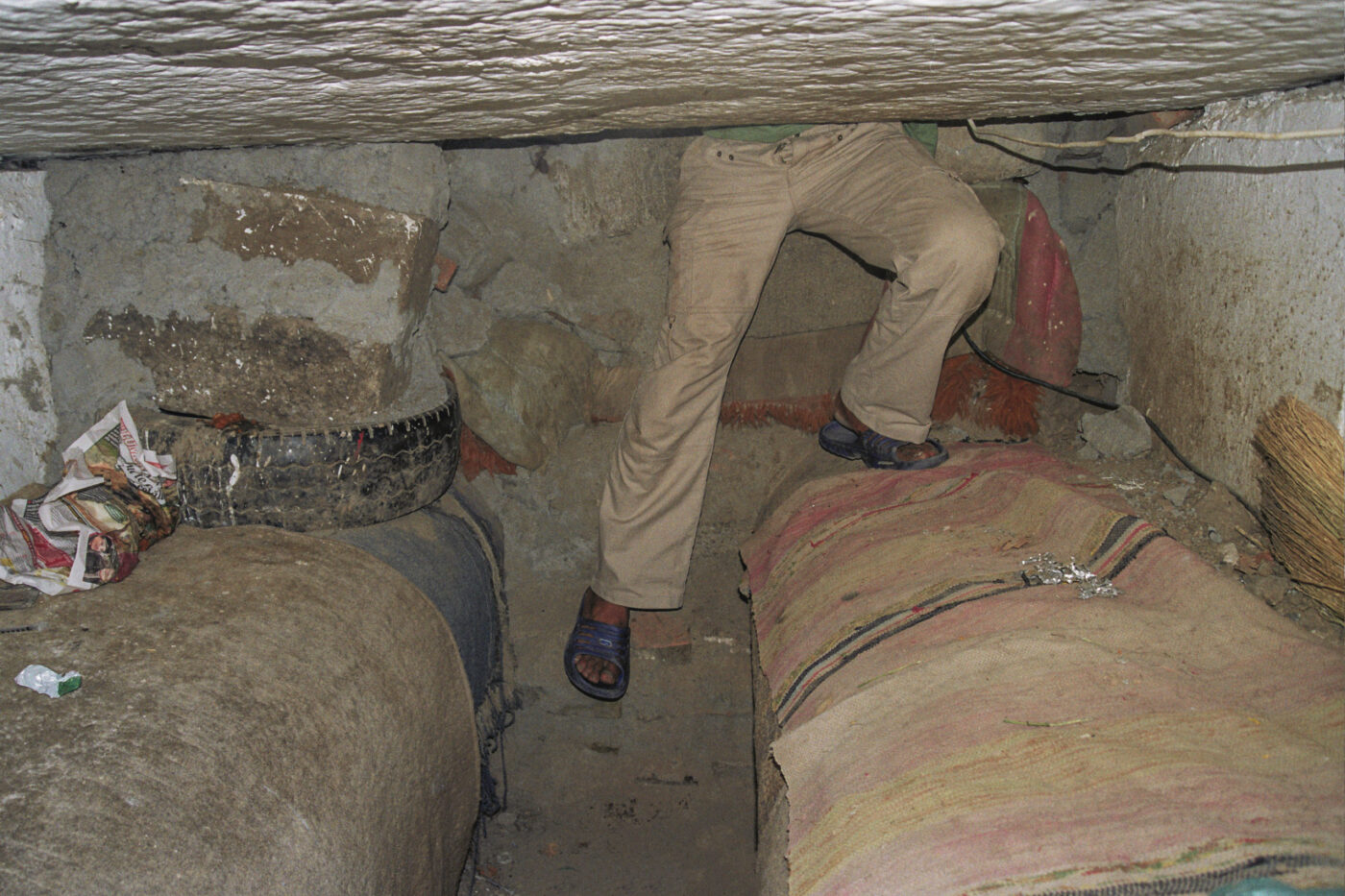
Dani Gherca, Cornel climbs out of the sewer, 2015. Inkjet print on photo Rag Baryta, 230x155cm
8/8
Dani Gherca maakt deel uit van de generatie opkomende Roemeense kunstenaars die documentairefotografie wil verenigen met een conceptueel en theoretisch kader. Aan de basis van zijn praktijk ligt zowel de tweeledige condition humaine van ‘leven’ en ‘zijn’, waarmee hij de idee van agglomeratie bevraagt, als de dialoog tussen bevolkingsdichtheid en fysieke ruimte. De hier getoonde beelden werden gemaakt in Gherca’s geboortestad Boekarest, een stad die sinds de Tweede Wereldoorlog ingrijpende demografische en stedenbouwkundige veranderingen heeft ondergaan. Over Casa Scinteii, 2017: voor 1946 leefde meer dan tachtig procent van de Roemeense bevolking in landelijk gebied. Tussen de jaren vijftig en tachtig heeft het communistische regime van Roemenië geprobeerd de agrarische samenleving om te vormen tot een geïndustrialiseerde. Over Cornel climbs out of the sewer, 2015 en Ilie enters the sewer, 2014: tussen 2011 en 2015 maakte Gherca een fotoreportage van een dakloze gemeenschap die ondergronds leefde in een riool in de buurt van het Centraal Station in Boekarest. In 2013 telde de gemeenschap met zeventig personen het hoogste aantal leden. Over Enachescu family, 2010: Boekarest is een autobiografisch project: het documenteert de arbeiderswijken in Oost-Boekarest, waarin Gherca opgroeide. De mensen op de foto’s zijn vrienden, buren en toevallige passanten.
Dani Gherca belongs to that generation of emerging Romanian visual artists interested in linking documentary photography to conceptual and theoretical approaches. The dual human conditions of living and being lie at the heart of his practice, through which he questions the notion of agglomeration, and the dialogue between human density and physical spaces. The images presented here were all taken in his native Bucharest, a city that since the Second World War has seen considerable changes in demography and city planning. About Casa Scinteii, 2017: before 1946, more than 80% of the Romanian population lived in rural areas. Between the fifties and eighties the Romanian communist regime attempted to turn that agrarian society into an industrialised one. About Cornel climbs out of the sewer, 2015, and Ilie enters the sewer, 2014: between 2011 and 2015, Gherca documented a homeless community living underground in a sewer located near Bucharest’s Central station. At its peak in 2013 around 70 people lived there. About Enachescu family, 2010: “Bucharest” is an autobiographical project: it documents the working class neighbourhoods in East Bucharest where Gherca grew up. The people photographed are friends, neighbours or accidental passers-by.
Dani Gherca fait partie de la génération des artistes visuels roumains émergents qui cherche à faire le lien entre la photographie documentaire et les approches conceptuelles et théoriques. La double condition humaine de la vie et de l’être est au cœur de sa pratique, à travers laquelle il s’interroge sur la notion d’agglomération et le dialogue entre densité humaine et espaces physiques. Les photos présentées ici ont toutes été prises dans sa ville natale de Bucarest, une ville qui a subi des changements démographiques et urbanistiques importants depuis la Deuxième Guerre mondiale. Concernant Casa Scinteii, 2017: avant 1946, plus de 80% de la population roumaine vivait dans des zones rurales. Entre les années 1950 et les années 1980, le régime communiste roumain a tenté de transformer cette société agraire en une société industrialisée. Concernant Cornel sort de l’égout, 2015 et Ilie entre dans l’égout, 2014: entre 2011 et 2015, Gherca a fait un reportage photo sur une communauté de sans-abris vivant sous terre, dans un égout situé près de la gare centrale de Bucharest. En 2013, quelque 70 personnes vivaient là. Un nombre record. Concernant La famille Enachescu, 2010: «Bucharest» est un projet autobiographique consacré aux quartiers ouvriers de l’est de Bucarest où Gherca a grandi. Les personnes photographiées sont des amis, des voisins ou des passants.